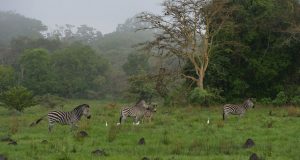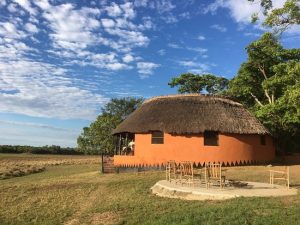
Please choose from the list of Northern Zambia Safari Operators below, covering – Shiwa Ng’andu, Kasanka, Bangweulu, Nyika, Tanganyika, Sumbu, Mweru Wanitapa, Isangano and Luvushi Manda.

Kasanka Trust are charity run operators who manage both Kasanka National Park and Bangweulu National Park raising money for conservation & community projects through tourism.
About ten years ago Kasanka was in danger of becoming yet another defunct national park due to rampant poaching. David Lloyd, a British expatriate, who had lived in Zambia for many years visited the park in 1985 and heard the crack of gunshots.
He concluded that if there was still poaching there must still be animals there and set out to save the park from total depletion.
He teamed up with a local farmer, sought funding and along with much of their own resources applied for official permission to rehabilitate the park.
They built tourist camps, roads and bridges and set up the KASANKA TRUST to raise funds for this community based project.
Wasa Camp & Luwombwa Camp
Visitors are welcomed at the fully equipped safari camps: Luwombwa Camp, accommodating 10 guests with boats and canoes for meanderings down the exquisitely beautiful Luwombwa river.

Wasa Camp, on the shores of lake Wasa, has six twin bed bungalows. Accommodation is simple but comfortable. Full catering is provided for fly-in clients and an experienced cook is on call for self catering clients.

A campsite with washing and basic cooking facilities is located on the north western tip of the park.
Kasanka is open all year round. Birding is especially good in the wet season from November to March when migrants arrive from the north. Game viewing is best in the dry months from May to October.
Not to be missed is the unique platform hide, 18m high in a giant mululu tree with a panoramic view over the Kapabi Swamp.
The rare and elusive sitatunga aquatic antelope feeds in the swamps below in the early mornings or late afternoons.
A startling site from the hide in November and December is the evening flight of around a million fruit bats leaving their roosts in search of food, darkening the sky for a few moments.
The Chisamba Wamponde pan attracts large herds of puku, spur winged goose and saddle bill storks and hosts many hippos and waterbuck.
Duiker are often seen in the woodlands fringing the pan. Lake Ndolwa is a beautiful and secluded spot where the shy shoebill stork has been seen in the papyrus reeds flanking the lake.
Chikufwe Plain is particularly rewarding in the early hours of the morning during the dry season. The plain is the favourite haunt of the sable and also attracts large numbers of hartebeest, reedbuck and occasionally a few zebra and buffalo.
This is an excellent birdwatching site too, especially for raptors such as the black breasted snake eagle.
Shoebill Island camp, Bangweulu
Shoebill Island Camp offers accommodation in safari tents under thatch roofs. Each has 2 beds, an en-suite shower and adjacent toilet. Shoebill Island has panoramic views over the swamps and gets its name from the Shoebill, which are usually in reach of the camp.
Boating can be arranged in banana boats or dugout canoes. March and April offer an amazing watering wilderness for the adventurous with Shoebills often visible from camp! The main season is from May to August when Shoebills can usually be seen on canoe trips.
September to November offer great birding (though maybe no Shoebill sightings) and the same amazing mammal spectacles.


